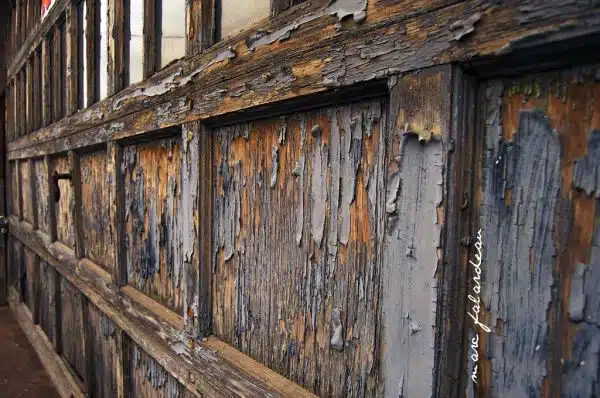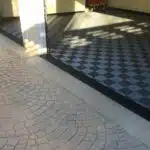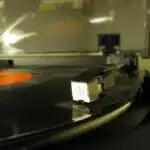As homeowners, we all want our properties to look their best. However, sometimes certain areas of our homes can become overlooked or neglected. One such area can be the garage door. Over time, it can accumulate dirt and grime or become faded from the sun’s UV rays. The good news is that painting your garage door is an easy and affordable way to give it a brand new look.
In this article, we will discuss how to paint a garage door so it looks brand new. We will cover everything from proper preparation and materials to use, to step-by-step instructions on how to apply the paint for a flawless finish. By following these tips and tricks, you can transform your garage door into a stunning focal point that adds curb appeal to your home while also protecting it from the elements. Let’s get started!
Assessing The Condition Of Your Garage Door
Did you know that a well-maintained garage door can increase the value of your property by up to 4%? That’s right! According to a survey conducted by Remodeling Magazine, replacing an old garage door with a new one is one of the best investments homeowners can make. However, if you are not ready to replace your garage door just yet, painting it can give it a brand new look and feel.
Before you begin painting, it is important to assess the condition of your garage door to determine if it is paintable. Start by inspecting the surface for any signs of rust, dents or cracks. If you notice any significant damage, repairing it before painting will ensure that the final result looks polished and professional.
Next, evaluate any repair needs such as broken springs or cables. These issues should be addressed before painting to avoid any potential accidents. Once all repairs have been made and the surface is free from damage, you can move on to choosing the right color and type of paint for your garage door.
Choosing The Right Paint Color And Type
Assessing the condition of your garage door is an essential first step in painting it. Before proceeding with any paint job, it is important to ensure that the surface is clean, smooth and free from any damage. A damaged or uneven garage door will not only make the paint job look unattractive but also reduce its durability. Therefore, it’s important to spend some time preparing your garage door for painting.
After assessing the condition of your garage door, the next step is to choose the right paint color and type. Color psychology plays a crucial role in this process as different colors can evoke different emotions and moods. For instance, blue can create a sense of calmness while red can stimulate energy and excitement. When selecting a color for your garage door, it’s important to consider the overall aesthetic of your home and how it will complement other exterior features.
Another aspect to consider when choosing the right paint type is its durability. Garage doors are exposed to harsh weather conditions such as rain, snow, and sunlight which can cause damage over time. Therefore, it’s important to select a high-quality paint that can withstand these conditions and last for years without fading or cracking. Using a durable paint will help you save money in the long run as you won’t need to repaint frequently due to wear and tear from environmental factors.
Transition sentence: Now that you have chosen the perfect color and type of paint for your garage door, let’s move on to gathering all the necessary materials required for this project.
Gathering The Necessary Materials
According to a study conducted by the National Association of Home Builders, 80% of homeowners believe that their garage door takes up a significant portion of their home’s exterior. Therefore, it is important to keep this area looking its best. If you are thinking about painting your garage door, you will need to gather some necessary materials. These include: paint (in your desired color), drop cloths, painter’s tape, sandpaper (medium and fine grit), primer, and a paint roller with an extension pole.
When it comes to purchasing these materials, there are several options available. Traditional home improvement stores such as Home Depot or Lowe’s offer a wide selection of paints and other materials needed for the job. However, if you prefer alternatives to traditional materials, consider shopping at local hardware stores or independent paint retailers. These places often carry unique and eco-friendly options that are not available in larger chain stores.
In addition to the above-mentioned items, it is also essential to have a clean and well-prepared area before starting any painting project. In the next section, we will discuss how to clear the area and properly prepare your garage door for painting. By following these steps carefully and using quality materials, you can ensure that your garage door looks brand new once again!
Clearing The Area And Preparing Your Garage Door
Before starting any painting project, it is crucial to clear the area and prepare the surface. When it comes to preparing your garage door for painting, there are two primary methods: clearing and masking. Clearing involves removing everything from the area around your garage door, while masking involves covering up surrounding surfaces with tape or plastic sheets. Both methods have their advantages and disadvantages, so it’s essential to decide which one will work best for your situation.
Clearing the area around your garage door is an important step because it ensures that no debris or dirt will interfere with the painting process. It also provides a clean and open workspace that allows you to move around freely without worrying about damaging anything. However, clearing can be time-consuming and may require you to move heavy items such as lawnmowers or bicycles out of the way.
On the other hand, masking allows you to protect surrounding surfaces without having to remove everything from the area. This method is suitable for those who don’t have a lot of time or who don’t want to move heavy objects. However, masking can be messy and may not provide complete protection against overspray or accidental paint spills.
DIYers may choose either method depending on their preferences and available resources. If you are inexperienced in painting garage doors or have limited time, seeking professional help might be the better option. Professionals have the necessary tools, equipment, and expertise to ensure that your garage door receives proper preparation before painting. Regardless of which method you choose, make sure that all surfaces are clean and dry before proceeding with painting.
Moving forward into repairing any damage or imperfections on your garage door requires careful attention to detail.
Repairing Any Damage Or Imperfections
- Sanding the garage door is essential for removing old paint and providing a smooth surface for the new paint.
- Priming the door is necessary to make the paint adhere to the surface and create a uniform finish.
- Patches of damaged areas should be filled in with putty to ensure that the paint adheres evenly.
- Careful sanding of the patched areas is necessary to ensure a smooth finish when painting.
- A high quality primer should be applied to the door prior to painting to ensure an even coat and lasting finish.
- Proper preparation is essential for a professional-looking finish when painting a garage door.
Sanding
One of the most important steps in painting a garage door is to ensure that it is free from any damage or imperfections. This means that you must make sure that the surface is smooth and even before applying any paint. Sanding is an essential process for achieving this.
Choosing sandpaper is crucial in preparing the garage door for painting. You need to select the right grit size that will provide enough abrasion to remove any rough spots, without being too coarse that it causes damage to the surface. Additionally, techniques for sanding curves should be utilized to ensure that all areas are sanded evenly. These techniques include using a sanding sponge or wrapping sandpaper around a dowel or other curved object.
Sanding may seem like a tedious task, but it is an essential part of achieving a high-quality finish on your garage door. By choosing the correct sandpaper and utilizing proper techniques, you can ensure that your garage door looks brand new after painting. Remember to take your time and be thorough with each stroke of sandpaper, as this will ultimately lead to a flawless end result.
Priming
To achieve a flawless finish on your garage door, repairing any damage or imperfections is crucial. Once you have sanded the surface, it’s time to prime the door before painting. Priming provides many benefits, including enhancing the adhesion of paint, preventing rust and corrosion, and covering stains and discolorations.
To begin priming your garage door, first, ensure that the surface is clean and dry. Then, apply a thin coat of primer using a high-quality brush or roller. Techniques for priming garage doors include starting at the top and working your way down in sections, ensuring that each section overlaps slightly with the previous one to avoid missed spots.
It’s important to note that choosing the right primer is essential for achieving good results. A high-quality primer should be formulated specifically for exterior surfaces like garage doors and provide excellent adhesion and durability. By taking the time to properly prime your garage door before painting, you can ensure that your finished product will look great and last for years to come.
Patching
To achieve a flawless finish on your garage door, repairing any damage or imperfections is crucial. One of the most important steps in this process is properly patching any holes, dents, or scratches in the surface of the door. Patching not only improves the appearance of the door but also helps to prevent further damage or deterioration over time.
To properly patch a garage door, start by cleaning and preparing the damaged area. Use a wire brush or sandpaper to remove any rust, dirt, or loose paint around the edges of the hole. Then, fill the hole with an appropriate patching compound and smooth it out using a putty knife. Allow the compound to dry completely before sanding it down and applying primer.
Common mistakes to avoid when patching garage doors include failing to clean and prepare the surface properly before applying the patching compound, using improper materials for filling holes (such as regular spackle), and not allowing enough drying time for the patching compound before sanding or painting. By taking care to follow proper procedures and avoiding these mistakes, you can ensure that your patched garage door will look great and last for years to come.
Cleaning And Sanding Your Garage Door
Now that any damage or imperfections have been repaired, it’s time to move on to cleaning and sanding your garage door. This step is crucial to ensure that the paint adheres properly and looks its best. Before starting, make sure you have all the necessary tools at hand. You’ll need a bucket of warm soapy water, a scrub brush, sandpaper (preferably 120-150 grit), clean rags, and a tack cloth.
Start by cleaning the garage door thoroughly with the warm soapy water and scrub brush. Be sure to remove any dirt, debris, or grime that may have accumulated over time. Once you’ve finished cleaning, rinse the door with clean water and allow it to dry completely. Next, use the sandpaper to smooth out any rough spots or existing paint on the surface of the door. This will create a good surface for the new paint to adhere to. Take your time and make sure you don’t miss any spots.
When sanding is complete, wipe down the door with a clean rag and then go over it again with a tack cloth to remove any remaining dust or debris. This step is crucial as even small particles can cause imperfections in your final result. Now that you’ve cleaned and sanded your garage door properly, you’re ready for priming! But before we get into applying a primer coat, let’s take some time to discuss choosing the right tools and tips for avoiding paint drips.
Transition: With your garage door now looking brand new after being cleaned and sanded correctly, it’s important not to rush into painting it just yet. In order to achieve professional-looking results without any unpleasant surprises along the way such as paint drips or uneven surfaces caused by using unsuitable brushes or rollers; choosing suitable tools is key.
Applying A Primer Coat
Before proceeding with the painting process, it is important to apply a primer coat on the garage door. This ensures that the paint adheres properly and creates a smooth finish. A primer coat also helps in covering any existing blemishes or marks on the surface.
Tips for smooth application:
- Begin by cleaning the surface of the garage door. Use soap and water to remove dirt, grease and oil stains.
- Apply the primer in thin coats using a brush or roller. Avoid applying thick layers as this will cause drips and uneven surfaces.
- Allow ample time for drying before applying subsequent coats of primer or paint.
Common primer mistakes:
- Rushing through the process can lead to poor adhesion and peeling of paint over time.
- Applying too much primer can cause bubbling, cracking or flaking.
- Ignoring manufacturer’s instructions regarding drying times can result in poor results.
With proper application of primer, you can ensure that your garage door looks brand new after painting it. Once the primer has dried completely, you can move on to applying the first coat of paint.
Painting The First Coat
After applying a primer coat, the next step is to choose the paint color for your garage door. You may want to match it with the color of your home’s exterior or go for a contrasting color that makes your garage door stand out. Whatever you decide, make sure to choose high-quality exterior paint that is durable and weather-resistant.
Before painting the first coat, be sure to prep the surfaces properly. Clean off any dirt, grime, or grease from the garage door using a pressure washer or a mixture of water and detergent. Scrape off any loose paint or rust using a scraper or wire brush. Sand down any rough patches or uneven areas on the surface of the door to create a smooth finish.
Once you have prepped the surfaces and chosen your paint color, you can begin painting the first coat. Use a high-quality brush or roller to apply an even coat of paint, starting at one corner and working your way across. Be sure not to overload your brush with too much paint as this can result in drips and uneven coverage. Allow time for drying and curing before applying additional coats of paint.
Allowing Time For Drying And Curing
Once you have finished painting your garage door, it is important to allow proper drying and curing time. This is crucial in ensuring the longevity and overall quality of the paint job. It is recommended to wait at least 24 hours before touching or closing the garage door, as this will prevent any damage from occurring.
Proper ventilation during the drying process is also essential. Make sure to keep windows and doors open to promote air circulation, which will help speed up the drying time. Additionally, avoid painting on humid or rainy days, as this can affect how quickly the paint dries and adheres to the surface.
To avoid paint drips and smudges, take care when applying each coat of paint. Use a brush or roller with even pressure and avoid overloading it with too much paint. Another helpful tip is to start at the top of the door and work your way down in smooth, consistent strokes.
Sanding and cleaning between coats is an important step in achieving a smooth finish on your garage door. By allowing sufficient drying time between coats and using proper ventilation techniques, you can ensure that each layer of paint adheres properly to the surface. In our next section, we will discuss how sanding and cleaning can further enhance your garage door’s appearance.
Sanding And Cleaning Between Coats
Imagine a brand new garage door. It’s smooth, free of blemishes, and has an even color that catches the eye. Achieving this look requires more than just applying a fresh coat of paint. To truly make your garage door look brand new, it’s important to sand and clean between each coat.
The benefits of sanding are twofold. First, it provides a smooth surface for the next coat of paint to adhere to. Second, it removes any imperfections or layers of old paint that may have built up over time. Before sanding, use a high-grit sandpaper to ensure the surface is even and any previous coats of paint have been removed.
Choosing the right cleaning products is just as important as sanding. Using harsh chemicals or abrasive tools can damage the surface and make it harder for the next coat of paint to adhere properly. Instead, opt for gentle soap and water or a specialized cleaner designed for painting preparation. Make sure to rinse thoroughly and allow the surface to dry completely before moving on to the next step.
- Use a high-grit sandpaper for evenness
- Remove any previous coats
- Choose gentle cleaning products
- Rinse thoroughly
- Allow the surface to dry completely
With proper sanding and cleaning techniques, your garage door will be ready for its second coat of paint in no time.
Applying The Second Coat Of Paint
After sanding and cleaning your garage door, it is time to apply the second coat of paint. Before you start painting, make sure that the first coat is completely dry. This usually takes between 24 and 48 hours, depending on the type of paint and weather conditions. It is important to wait until the first coat is dry before applying the second coat to prevent any bubbles or peeling.
Tips for smooth application include using a high-quality paintbrush or roller, starting at the top of the door and working your way down in small sections, and avoiding overloading your brush or roller with too much paint. Applying thin coats will help prevent drips and ensure an even finish. Another useful tip is to use a paint additive such as Floetrol to help extend drying time and improve flow.
Avoiding common mistakes is crucial for achieving a professional-looking finish on your garage door. One common mistake is not covering hardware such as hinges or handles before painting, which can result in unsightly drips or runs on these areas. Another mistake is not properly preparing the surface by removing old paint or rust before painting. This can lead to poor adhesion and premature peeling of the new paint.
Now that you have applied two coats of paint to your garage door, take a step back and inspect it closely for any missed spots or uneven areas. Touch up any missed spots with a small brush or roller, being careful not to overload with too much paint in order to avoid drips. Once you are satisfied with how it looks, allow it to dry completely before reinstalling any hardware such as handles or hinges. With these steps completed, your garage door should look brand new again!
Touching Up Any Missed Spots
Painting a garage door can be an excellent way to enhance the curb appeal of your home. However, even after you have put in the effort to properly paint your garage door, you may still find some missed spots that need touching up. This is a common issue faced by many homeowners who attempt to paint their garage doors themselves.
One common mistake made when touching up missed spots on a garage door is using too much paint. This can result in unsightly bumps or drips on the surface of the door. Instead, it is best to use a small brush and lightly apply just enough paint to cover the missed spot. It is also important to feather out the edges of the newly applied paint so that it blends seamlessly with the surrounding area.
An alternative method for touching up missed spots on a garage door is to use spray paint instead of traditional liquid paint. Spray painting allows for more precision and can help ensure that touch-ups are virtually invisible. However, it is important to note that spray painting should only be attempted by those with experience using this method as it requires specific equipment and techniques.
Now that any missed spots have been touched up, it’s time to remove any tape or coverings used during the painting process. This step is crucial as leaving tape or other coverings on for too long can result in peeling or damage to both the painted surface and underlying material. Carefully remove all tape and coverings while being mindful not to pull too hard or fast, which can cause damage.
Removing Tape And Coverings
When it comes to painting a garage door, it is crucial to remove any tape and coverings that were used during the preparation stages. These materials may have become adhered to the surface of the door or left behind stubborn adhesive residue that can be unsightly and affect the final finish. To avoid any complications or damage to the paint job, there are some tips for removing these materials effectively.
One of the best ways to remove stubborn adhesive residue left by tape or coverings is by using a solvent-based cleaner. This type of cleaner will dissolve any remaining adhesive without damaging the surface of the garage door. However, it is essential to test a small area first to ensure that it does not react negatively with the paint or cause discoloration. Once you have found a suitable cleaner, apply it generously to the affected area and let it sit for a few minutes before wiping away with a clean cloth or sponge.
Tips for avoiding paint bleed when removing tape and coverings include removing them at an angle rather than straight up, which can pull off fresh paint from surrounding areas. It is also important to remove all tape and coverings before allowing the paint to dry completely. Leaving these materials on after drying can make them more difficult to remove later on without damaging the new coat of paint. By following these tips and using effective techniques for removing tape and adhesive residue, you can ensure that your garage door looks brand new once again.
As mentioned earlier, removing tape and coverings is an essential step in preparing your garage door for painting properly. The next step involves applying a sealant or protective coating that will help preserve your hard work and prevent future damage or wear.
Applying A Sealant Or Protective Coating
After removing tape and coverings from your garage door, it is time to apply a sealant or protective coating. This step is important because it not only helps preserve the paint job but also adds an extra layer of protection against weathering, UV rays, and other environmental factors. In this section, we will discuss the benefits of sealant and provide tips for applying it evenly.
Benefits of Sealant:
- Protects against weathering, UV rays and other environmental factors.
- Preserves the paint job by preventing fading and peeling.
- Adds an extra layer of protection to your garage door.
Tips for Applying Sealant Evenly:
- Use a high-quality brush or roller to apply the sealant
- Apply thin coats to avoid drips and runs
- Work in sections to ensure even coverage
- Allow each coat to dry before applying the next one
- Follow the manufacturer’s instructions for best results
By following these tips, you can ensure that your garage door looks brand new for years to come. It may take some time and effort, but the end result will be worth it. Admiring your newly painted garage door will not only give you a sense of accomplishment but also enhance the overall curb appeal of your home.
Admiring Your Newly Painted Garage Door
After putting in the time and effort to paint your garage door, it’s important to properly maintain it to ensure it maintains its fresh, new look for years to come. Regular garage door maintenance is essential for preventing paint chipping and other issues that could detract from its appearance.
One tip for preventing paint chipping is to avoid using harsh chemicals or abrasive materials when cleaning your garage door. Stick with a gentle soap and water solution, and use a soft cloth or sponge to gently scrub away dirt and grime. Avoid using pressure washers or hard-bristled brushes, as these can damage the paint.
Another key aspect of garage door maintenance is regular inspections. Check your garage door periodically for signs of wear or damage, such as cracks in the paint or dents in the metal. If you notice any issues, address them promptly to prevent them from worsening over time. With proper care and attention, your newly painted garage door can continue looking brand new for many years to come.
Conclusion
When it comes to painting your garage door, there are a few key steps you need to follow in order to achieve a flawless finish that will make your door look brand new. First, assess the condition of your garage door and choose the right paint color and type for your needs. Then, gather all of the necessary materials and prepare your garage area for painting.
Next, repair any damage or imperfections on the surface of your garage door before touching up any missed spots. Once you have completed these steps, remove any tape or coverings from the surface of the door and apply a sealant or protective coating to ensure that your newly painted garage door stays looking fresh for years to come.
By following these simple steps and using high-quality materials, you can transform your old, worn-out garage door into a beautiful focal point that enhances the curb appeal of your home. Whether you are an experienced painter or just starting out, taking the time to properly prepare and paint your garage door is well worth the effort. So why wait? Start planning your next painting project today!
Image Credits
- “GARAGE DOOR,” by marc falardeau (featured)





























